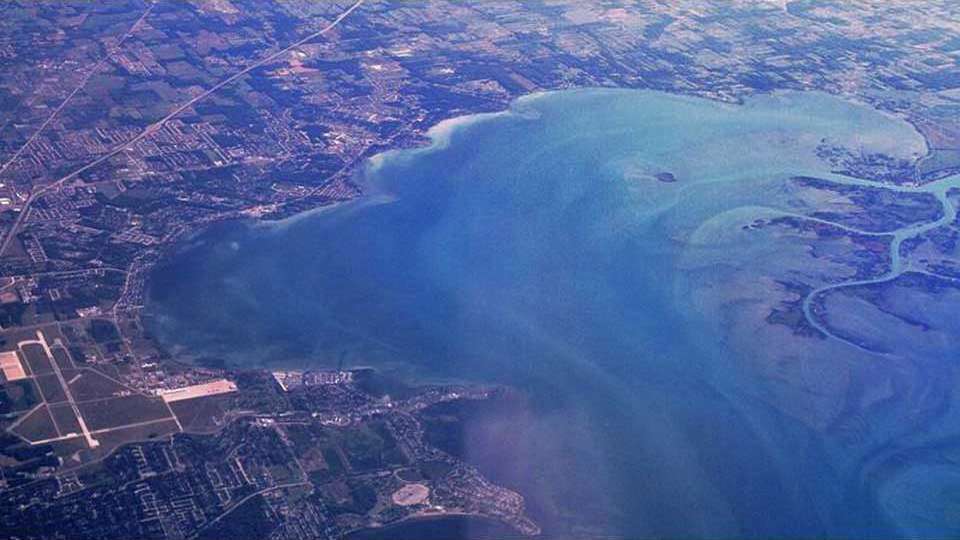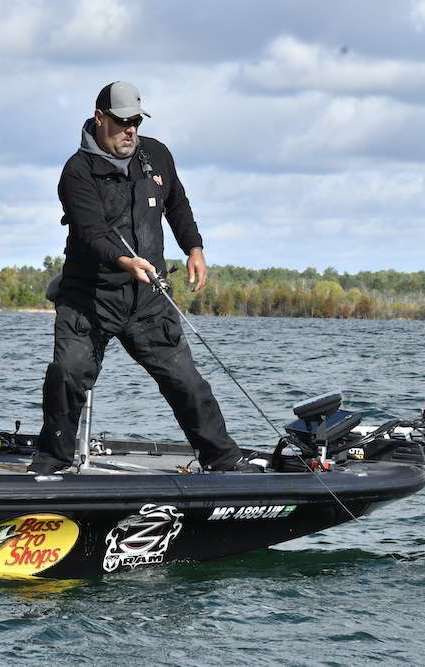
I heard a lot of chatter prior to the YETI Bassmaster Elite at Lake St. Clair about how tough fishing would be since Canada was off limits.
People were saying it would only take 18 pounds a day.
I rolled my eyes. I knew better. It’s still Lake St. Clair, and there’s a reason I call it Lake Guntersville north. There were a jillion boats out there fishing, and these guys still caught them. The lake is simply loaded with smallmouth.
I have like 30-some years of history on this lake. I agree that Canada produces a lot of nice fish. But so does the U.S. side.
One of the biggest misconceptions is that fishing St. Clair is more of a random pattern. It may be different, but not random.
When first timers visit they have a tendency to want to find that magical bait. You know — it needs to be green pumpkin with blue flake or a chartreuse crankbait.
Or a magical spot.
That’s the wrong mindset. I don’t care whether it’s St. Clair or any northern lake filled with smallmouth. This is the time of year fish group up by size and move … and move … and move.
Remember, the smallmouth is the perfect killing machine. The only comparable freshwater fish is a muskie.
And when it comes to saltwater, red fish and smallmouth are incredibly identical; they travel in schools and disintegrate everything in their faces before moving on. That’s why so many red fish anglers who go smallmouth fishing do so well.
They understand that you can’t overthink this. Don’t worry about the “structure” that the fish are using. Smallmouth are only driven by what they can put in their mouths. If you aren’t around the food source you are not going to catch very many.
You can’t key on a honey hole because what you thought was a honey hole is moving by the hour. These fish will slide around, maybe only 100 yards, but to wherever the next available food source is nearby.
When I was out there covering the tournament from my boat I stared at the graph all day. The common connection with the leaders wasn’t the structure – it was that they all had tons of bait around them. The guys who weren’t catching them didn’t have much bait.
You might find the perfect flat or structure, but if there is no baitfish, there will be no wolf.
Yet some anglers say, “Oh, I know they are here, and I will figure them out.”
No, dude, you won’t. If they are there they will try to bite off the side of your boat.
You just have to keep moving until you find what they are putting in their mouths.
Smallmouth are different than a largemouth, a fish that is more of an opportunistic feeder. The green fish will hang out in an area until the food source comes to them. The smallmouth doesn’t hang out.
The exception is in the river where structure and current comes into play. But a lake is different.
So, the next time you’re on a smallmouth vacation or prepping for a derby up north, understand what an absolute killing machine a smallmouth is. Don’t over analyze the lake by trying to find that “magic” spot.
Keep moving until you find the bait. We all like to start firing out lures the minute we get on the water, but I’ve learned to never stop the boat until I see lots of bait or bass.
And when you do find that, getting them to bite becomes rather easy.

